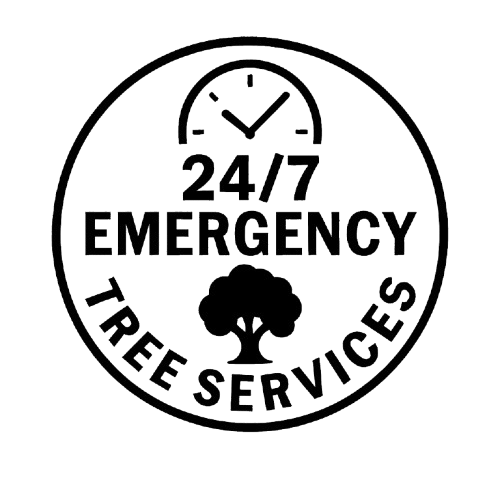How NYC Protects Urban Trees: Strategies to Prevent Soil Compaction and Ensure Long-Term Sustainability
Urban trees are vital in making New York City a greener, healthier place to live. They provide shade, improve air quality, reduce urban heat, and support biodiversity. However, these public trees face unique challenges, one of the most significant being soil compaction. Heavy foot traffic, construction activities, and vehicle loads compact the soil around tree roots, hindering their growth and overall health. To combat this, NYC has implemented various strategies to protect public trees from the harmful effects of soil compaction. These methods involve a combination of practical infrastructure, public education, and innovative tools to ensure that the city’s trees continue to thrive in a bustling urban environment. Key Takeaways: Soil Compaction Threatens Tree Health: Soil compaction restricts tree roots from absorbing vital nutrients, water, and air. This makes it difficult for trees to grow correctly, increases their stress, and leaves them vulnerable to diseases and environmental changes. NYC recognizes this issue and has established guidelines to minimize soil compaction around its urban trees. Tree Protection Zones (TPZ) and Green Infrastructure Solutions: NYC enforces Tree Protection Zones (TPZ) during construction and public works to ensure tree roots remain undisturbed. Additionally, green infrastructure solutions like permeable pavements and bioswales reduce the compaction caused by foot traffic while improving water drainage and soil aeration. Public Education and Community Involvement are Key: NYC’s efforts to protect public trees extend beyond regulations by engaging the community. Public outreach campaigns educate citizens on caring for and protecting urban trees, encouraging everyone to respect tree zones and participate in tree stewardship programs. This collective responsibility helps maintain a sustainable and healthy urban forest. Why Soil Compaction is a Threat to Urban Trees Soil compaction occurs when the ground is compressed, causing soil particles to become tightly packed. In urban environments, where foot traffic, vehicles, and construction equipment frequently pass near trees, soil compaction is a significant problem. This compaction makes the soil denser, affecting tree roots’ ability to grow and function properly. Explanation of Soil Compaction and Its Effect on Tree Health When soil compacts, it loses its natural structure, and the spaces between soil particles become smaller. These spaces are vital for holding air and water, which trees need for healthy root growth. Without proper aeration and water availability, tree roots struggle to spread out and develop, resulting in stunted growth and weakened trees. Reduced Root Growth Due to Compacted Soil Tree roots require soft, loose soil to expand and access the nutrients and water they need. Compacted soil creates a barrier, preventing roots from growing freely. This limited root expansion reduces the tree’s ability to anchor itself securely in the ground, making it more susceptible to toppling during storms or strong winds. Moreover, the restricted root growth limits the tree’s access to essential resources, hindering its overall development. Impact on Water Absorption, Nutrient Uptake, and Overall Tree Vitality Compacted soil drastically reduces the soil’s capacity to absorb water. As a result, instead of soaking into the ground, rainwater often runs off the surface, depriving tree roots of the moisture they need to survive. Additionally, the lack of space in compacted soil restricts the movement of nutrients, further diminishing the tree’s ability to thrive. Over time, trees subjected to these conditions become stressed, weaker, and more vulnerable to diseases, pests, and environmental challenges. In the long term, this can shorten their lifespan. NYC’s Guidelines for Tree Protection Zones (TPZ) Definition of Tree Protection Zones (TPZ) A Tree Protection Zone (TPZ) is an area around the base of a tree that is safeguarded during construction, public works, or other urban activities. The TPZ acts as a buffer to prevent damage to the tree’s root system and surrounding soil, ensuring the tree remains healthy and unaffected by external disturbances. This zone is critical in protecting the visible parts of the tree and the often-overlooked root system, which is highly vulnerable to soil compaction and physical damage. Importance of Creating Barriers Around Trees During Construction and Public Works Urban environments, especially cities like New York, are constantly undergoing development. Construction activities such as digging, heavy machinery use, and even pedestrian movement can harm tree roots, compact the soil, or physically damage tree trunks and branches. To prevent such issues, establishing a TPZ around trees is essential. These protective zones act as a physical barrier, keeping harmful activities at a safe distance, thus minimizing root damage, soil compaction, and other disturbances. Without TPZs, the health of urban trees would be significantly compromised, reducing their ability to thrive in a harsh city environment. Specific Guidelines for TPZs NYC provides detailed guidelines to ensure TPZs are effective in protecting trees. These guidelines include specifications on the distance from the tree, the height of the barriers, and the materials used. The guidelines are tailored to each tree’s size and location, ensuring maximum protection. Aspect Guideline Distance from Tree Trunks TPZ barriers should be placed at least 1 foot in radius per inch of trunk diameter. For example, if the tree’s trunk diameter is 10 inches, the TPZ should extend at least 10 feet from the trunk. Height of Barriers Barriers should be 4 to 6 feet high to prevent unauthorized access and tree roots or trunk damage. Materials Used Barriers are typically made of sturdy, durable materials like wood, metal fencing, or other rigid construction materials that can withstand pressure from construction activities. Signage Clear signage must be installed on the barriers to indicate that the area is a Tree Protection Zone and should not be disturbed. Soil Compaction Measures Additional soil protection measures, such as mulching or placing a protective layer over the soil within the TPZ, are often recommended to further protect against compaction. These guidelines protect public trees from harm during construction or urban development. Protecting the root system through the TPZ minimizes the risk of soil compaction, which could otherwise stunt tree growth, reduce water absorption, and lead to long-term health problems for the tree. Benefits of TPZs Preserving Tree Health: By maintaining a safe distance between




